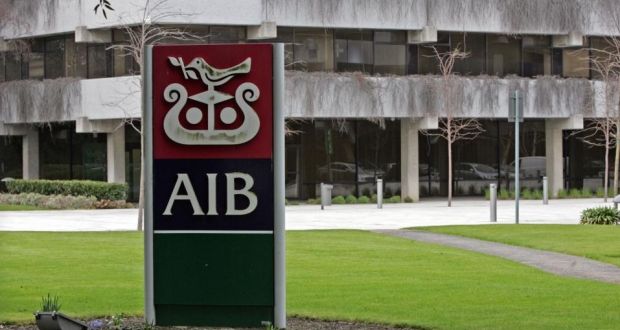The article below is the first in a four part series that examines the housing policies of the political establishment and answers some of the most common questions that people ask about housing. You can read part two here, part three here, and part four here.
Housing Policy Explained (1/4) - Banks Over Homes
Have you ever wondered why the government doesn’t just build enough public housing to solve the housing crisis?
Or why the government continues to hand billions of euro in public money to private landlords via the Housing Assistance Payment (HAP), Rent Assistance Payment (RAS) and other similar programmes?
Or why the government is using the taxation and planning systems to encourage, primarily foreign, corporations to take ownership of tens of thousands of Irish homes?
Logically, you might think that the answer to these questions can be found by examining government housing policy. But, you’d be wrong. To understand Fine Gael housing policy you must first understand their banking policy.
Fine Gael’s Pascal Donohoe (Minister For Finance) and Leo Varadkar (Taoiseach) effectively control government banking and housing policy.
Capitalist economies, like the one that operates in Ireland, depend on the private banking and financial sector to deliver a steady supply of credit to industry and consumers.
Without access to credit many businesses would be unable to produce their products and services. And likewise many consumers would be unable to buy those same products and services if they couldn't access mortgages, car loans, personal loans, credit cards and other forms of credit.
Even governments rely on the international money markets to provide them with short, medium and long-term loans to pay for day-to-day services, capital investment and other state expenditure.
Credit is the essential oil that allows the machinery of a modern capitalist economy to keep on turning. Without credit that machinery would quickly seize up.
Any serious threat to the private banking sector, therefore, represents a serious threat to the wider economy. In the most extreme circumstances a failure of the private banking sector could threaten the very existence of a capitalist economy and the social and political structures that flow from it.
The old Anglo Irish Bank HQ on St Stephen’s Green.
This is exactly the scenario that faced the Fianna Fáil and Green Party coalition in 2008 – a serious, possibly existential, threat to the private banking sector, the wider economy, the political system and, of course, their own skins.
On St Patrick’s Day of that year, Anglo Irish Bank, the third biggest bank in the state, had a staggering €1,000,000,000 (€1bn) wiped from its share value.
In the months that followed, as Anglo continued to implode, it became clear that a number of other private banks were in serious difficulties. Critically these included the so-called ‘pillar banks’ of Allied Irish Bank and Bank Of Ireland - banks that were deemed to be ‘too big to fail’.
On the 28th of September the crisis came to a head as senior members of government, top civil servants and bank executives met late into the night. By morning Fianna Fáil and The Green Party had taken the extraordinary and unprecedented decision to guarantee the deposits and liabilities of the entire private banking sector.
The guarantee put the public on the hook for an estimated liability of €440,000,000,000 (€440bn). At the time that was nine times greater than the entire national debt and equated to roughly €100,000 of debt risk for every man, woman and child in the state.
When faced with a clear choice between protecting the interests of private capital, or protecting the interests of the people, Fianna Fáil and the Green Party chose the former, at great long-term cost to the latter.
Eamon Ryan was a Minister in the Green Party/Fianna Fáil government that bailed out the banks, established NAMA and laid the foundations of the current housing crisis.
The nationalisation of Anglo Irish Bank, the creation of NAMA, the state bailout of the banks and the Troika bailout of the state itself all followed within twenty-seven months of that fateful night in September 2008.
Fast forward more than a decade later to July 2019 and NAMA, the ‘bad bank’ that was created by Fianna Fáil and the Green Party, is still hawking off the remaining homes, offices, factories, shopping centres, land and other assets from a portfolio that was once valued at €88,000,000,000 (€88bn).
The liquidated Irish Bank Resolution Corporation (made up of the former Anglo Irish Bank and Irish Nationwide Building Society) is also still out there, a rotting financial corpse buried somewhere in KPMG.
Of the two so-called ‘pillar banks’, the state still owns 71% of Allied Irish Bank and 14% of Bank of Ireland; for good measure it also owns a whopping 75% of Permanent TSB.
AIB HQ.
In other words, the banking sector remains highly dysfunctional over a decade after the initial crisis of 2008, a fact that Fine Gael, the rest of the political establishment and the permanent government of the civil service are acutely aware of.
The restoration of stability and ‘normality’ within the private banking sector is perhaps the single most important macro economic and political objective of not just the current government, but also of the wider political establishment and the institutions of the state.
More important than housing, healthcare, education, climate change or any other issue. The fact that no establishment politician will admit that this is the case does not make it any less true.
By their actions in government Fine Gael, Fianna Fáil, the Green Party, Labour and their independent allies all demonstrated that they know the capitalist craic - returning the banking sector to ‘normality’ must be prioritised above all other matters.
The loss of a generation to emigration, an increase in the national debt from €43bn to more than €200bn and parallel crises in housing, healthcare, education, transport and other services are the price they are willing to pay to return the banking sector to ‘normality’.
‘Normality’ requires the complete winding-up of both NAMA and IBRC.
‘Normality’ requires the sale of all government shares in all the private banks.
‘Normality’ requires all aspects of banking and finance to be returned to full private ownership.
‘Normality’ requires the private banks to return to profitability.
Understanding the absolute primacy of re-establishing ‘normality’ in the banking sector is critical to understanding housing policies of the establishment political parties.
The answers to key questions about their housing policy become apparent once the filter of ‘banks before homes’ is applied to them.





